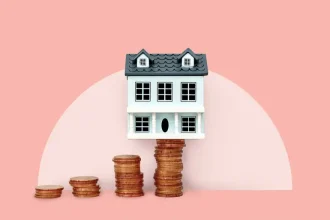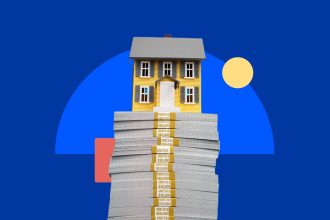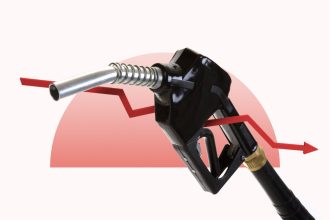Buy Now, Pay Later (BNPL) is an attractive financing option. Unlike a traditional credit card, it lets you pay for purchases on a predictable schedule, usually without worrying about additional charges.
But what if you took BNPL capabilities and added them to a credit card?
A new kind of product on the credit market, a BNPL-branded card does just that. If you’re a BNPL fan, this might seem appealing. However, if you take a closer look, you may find there’s little this kind of card can offer you that a regular credit card doesn’t. In fact, you might miss out on flexibility if you go for a BNPL card.
Here’s what you need to know about this emerging card product — and why you shouldn’t be tempted by it too quickly.
What BNPL cards offer
The possible new trend started with the Klarna Credit Card* by the popular BNPL provider Klarna. The card charges no annual fees and only requires a soft credit check to apply, meaning you won’t have to worry about a hard inquiry dinging your credit score.
You can use this card anywhere Visa is accepted — in-store and online, in the U.S. or abroad. When you make a purchase with the Klarna card, you can choose how you want to pay it off from four plans:
- Pay in 4, interest-free: This option lets you spread the cost over four installments with 0 percent interest. You’ll pay 25 percent of the total upfront and the rest bi-weekly over six weeks. You need to apply this feature in the Klarna app within 12 hours of the purchase to use it.
- Pay over three to 18 months: You can also choose to pay for purchases over three, six, 12 or 18 months. In this case, a 28.99 percent APR applies.
- Move to the next month: If you need more time to pay, you can move a purchase to the next month — but again, you’ll have to pay interest.
- Pay in full: Alternatively, you can simply pay off the purchase in full.
While the Klarna card’s payment structure is unique, it’s not the only BNPL player in the credit card space.
The new PayPal Credit Card, for instance, is “coming soon,” according to the company’s website. While PayPal has long offered direct BNPL options on purchases through the platform, its new credit card features BNPL capabilities that are more of an intro APR offer. The card doesn’t feature the PayPal’s Pay in 4 financing, but you get six months of no interest on purchases of $149 or more when checking out online with PayPal. Additionally, no interest is charged on qualifying travel purchases posted to the account by Jan. 31, 2026 if paid in full within six months.
Note that in either case, if you don’t finish paying off the purchase within the six-month period, you’ll owe interest on the original amount — not just the leftover balance. The card’s APR is 30.39 percent (variable).
A more traditional cash back option
PayPal also offers the PayPal Cashback Mastercard®*, but it’s more of a traditional rewards card with no BNPL features or 0 percent APR promos.
How BNPL cards compare to traditional credit cards
The lack of interest charges is certainly attractive. However, the right credit card can offer you a much longer interest-free period, as well as more flexibility with payments.
Take the Klarna Credit Card. Unless you choose Pay in 4 or pay in full, you’re stuck with a high APR. Moreover, you have to manage each transaction individually, deciding what you want to do with it. If you use the card regularly, that might create quite a bit of work for you.
Further, the PayPal Credit Card advertises deferred-interest offers. Such offers are sneaky as it’s easy to assume you’ll only pay interest on the remaining balance after the intro period ends when, in fact, it’s charged on the full amount. And considering the card’s regular APR, the interest charges could be expensive.
We reached out to Klarna and PayPal, but they provided no comments.
Compare these options to a regular 0 percent APR credit card. You can get more than a year of no interest on purchases — and it will be a true 0 percent APR offer, meaning once it expires, you’ll only owe interest on the remaining balance moving forward.
Besides, many of these traditional cards offer rewards. For example, the Chase Freedom Unlimited® earns 5 percent cash back on travel purchased through Chase TravelSM, 3 percent cash back on drugstore purchases and dining at restaurants (including takeout and eligible delivery services) and 1.5 percent on all other purchases. The card charges no annual fees and provides an intro 0 percent APR on purchases for 15 months. A 18.99% – 28.49% Variable APR kicks in after.
If you’re planning a big purchase, and a longer no-interest offer takes priority over rewards, consider a card such as the Wells Fargo Reflect® Card . It gives you a 0 percent intro APR for 21 months from account opening, meaning you’ll have close to two years without interest charges on purchases. After that, the regular 17.24%, 23.74%, or 28.99% Variable APR takes effect.
With these cards, you aren’t tied to the strict payment schedule you get with Pay in 4. This allows for greater flexibility if your cash flow fluctuates. In any given month, you can make a bigger payment to get rid of the balance sooner or reduce your normal payment if you’re facing a financial setback.
That said, whichever card you choose, you should always plan to pay off the balance within the specified period. You’re likely to pay less in interest on a regular credit card than on a BNPL card, but credit card interest is rarely cheap — and it adds up quickly.
Your card might already have BNPL features
Credit card issuers haven’t ignored BNPL’s rise in popularity. Many popular cards now provide BNPL plan options.
Often, these plans offer several term options, so you can pick the timeframe that works best for you. This further adds to the flexibility.
Some examples of such plans include:
- American Express Plan It allows you to create up to 10 plans for purchases of at least $100. The payment is automatically included in your minimum payment due each month. No interest is charged, but there’s a fixed monthly fee.
- Chase Pay Over Time can also be applied to eligible purchases of $100 or more (or at least $50 when applying the feature at Amazon checkout). You’ll pay a fixed monthly fee but no interest.
- Citi Flex Pay is available on eligible purchases of $75 or more. Again, you’ll pay a plan fee but won’t be charged any interest. Your monthly plan payment will be added to the minimum payment due.
Other issuers might provide their own variation of BNPL features too. Make sure to check what your card offers — you might find you don’t need to apply for an additional financial product after all.
The bottom line
It’s too early to tell whether BNPL-branded credit cards will become a trend. For now, however, you’ll probably have more flexibility in payment options with a regular credit card. Check what the cards in your wallet offer or browse new credit card offers to find what you need.
The information about the Klarna Credit Card, PayPal Credit Card, PayPal Cashback Mastercard® has been collected independently by Bankrate.com. The card details have not been reviewed or approved by the card issuer.
Why we ask for feedback
Your feedback helps us improve our content and services. It takes less than a minute to
complete.
Your responses are anonymous and will only be used for improving our website.
Help us improve our content
Read the full article here














